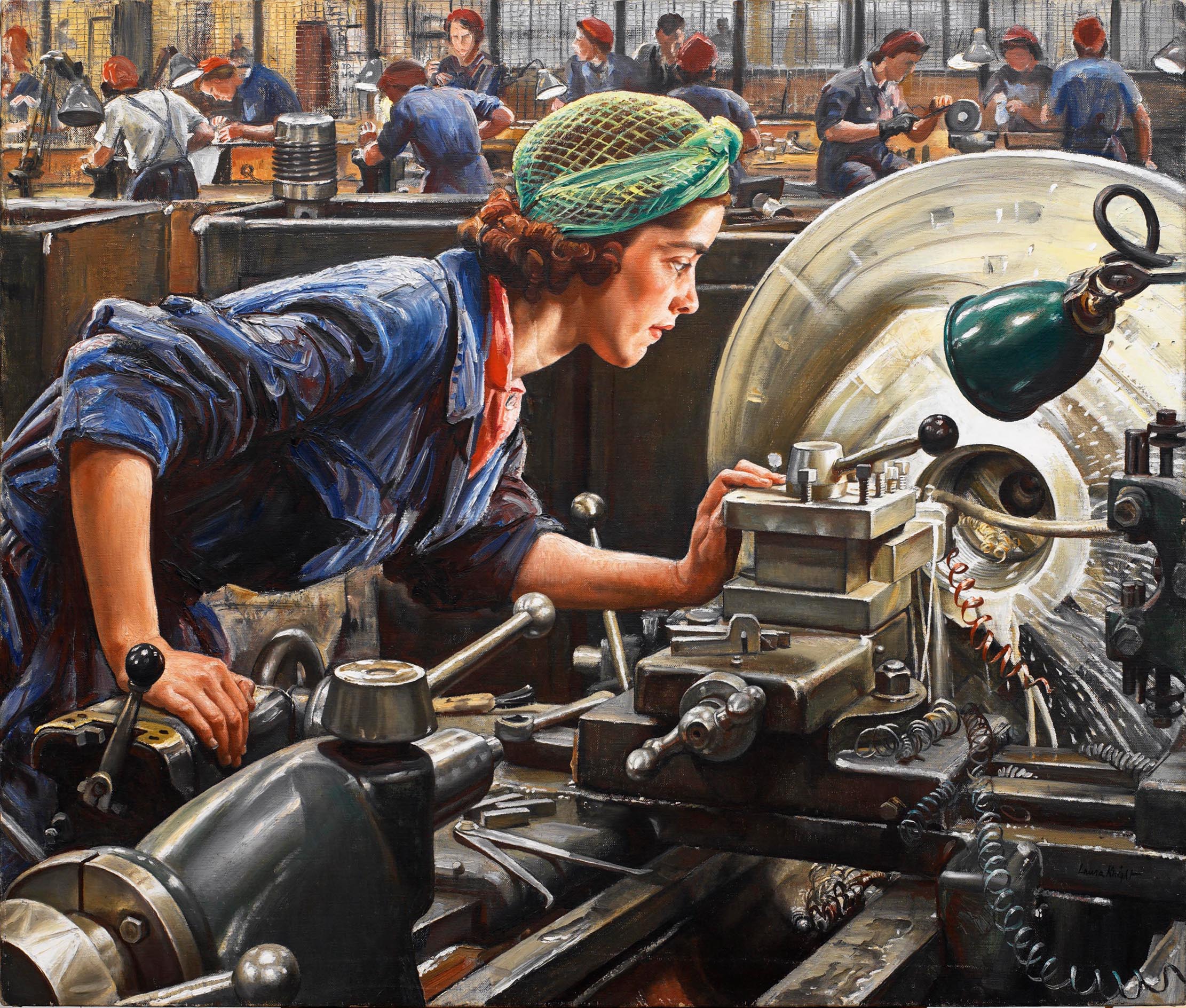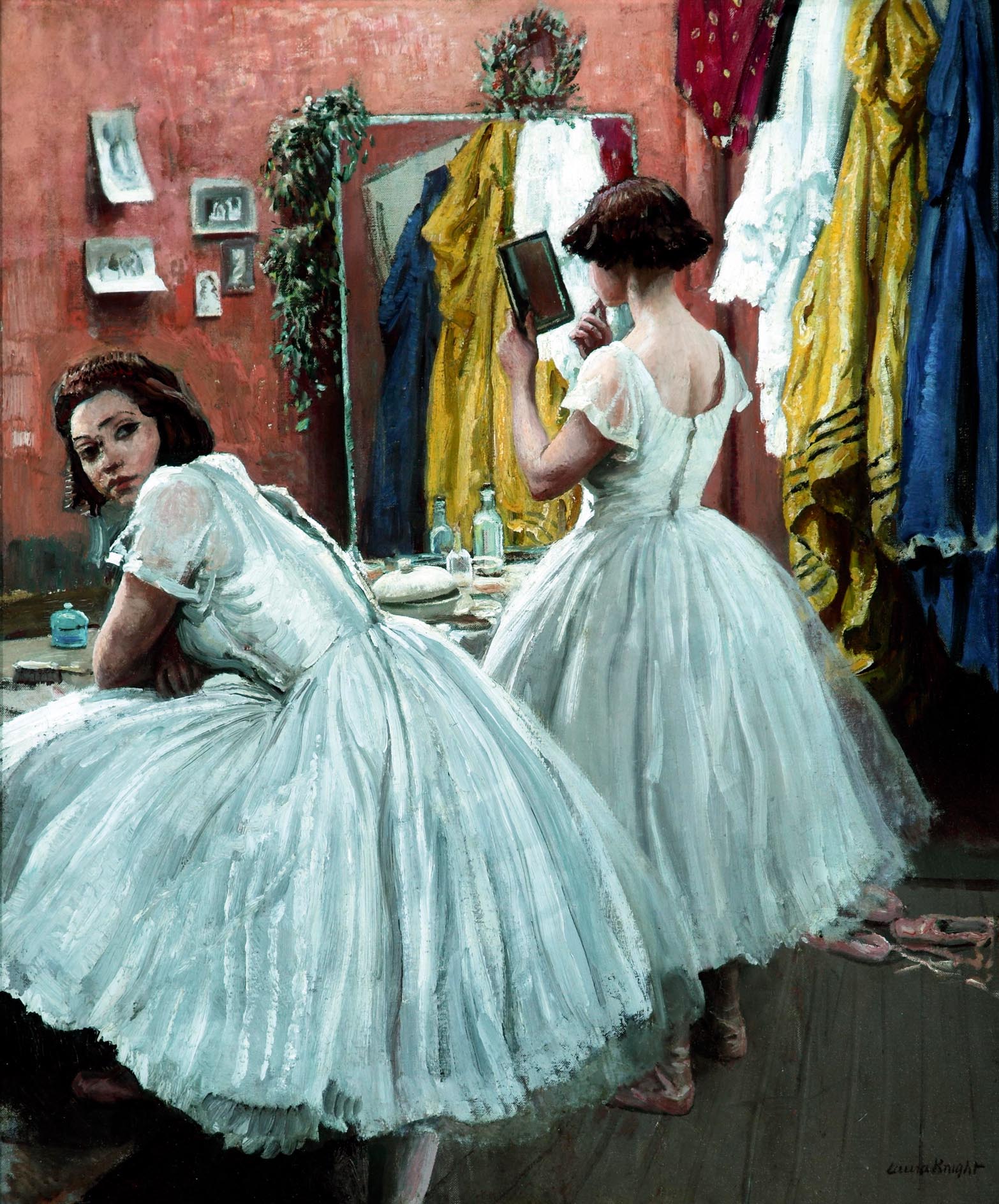In Focus: Dame Laura Knight, the genius written off by the snobs of the art world, finally getting recognition for her vibrancy and expression
She was a brilliant observer of boxers, ballet dancers, gypsies, horses, coastlines and women at war. To overlook the vitality of Dame Laura Knight’s work is nothing short of snobbery, argues Ian Collins.


In recent decades, it has been a mark of art-world snobbery to rubbish Dame Laura Knight. The token woman at the top table of British painting for much of the 20th century was too versatile, prolific and popular; too workaday, too vulgar. Now, however — with the first major gallery survey since a Nottingham retrospective of 1970, which opened days after her death — we can see how cleverly she caught the character of her times in lucid paint and how deeply she has seeped into our consciousness.
When we think of a picture of blissful summer on the Cornish coast or of fairs and circuses, boxers and ballet dancers, gypsies, horses, theatres, dressing rooms, courtrooms and, most especially, women at work, we probably have a Knight painting in mind. She was a painter of immense empathy, shifting perspectives in a selfless focus on her varied subjects and forever hiding the titanic effort behind her stellar career. Her famous self-portrait, with face in profile and further obscured by an all-weather hat, celebrates the nude models she was not allowed to see until she could pay for them herself.
Laura Johnson was born at Long Eaton, Derbyshire, in 1877, the youngest of three sisters. Her adulterous father absconded before her birth and her mother returned to family roots in Nottingham, reliant on the clan’s failing lace factory and her own efforts as an art teacher. Laura’s childhood was a saga of spirit, talent and dashed hope. She was to have studied in Paris, but plunging family fortunes forced a switch to Nottingham art school. Aged 13, she was dazzled by fellow student Harold Knight, whom she soon outshone.

By the time she came to marry Harold, in 1903, all the role models in her early life — grandmother, great-aunt, mother, sister — were dead. Now and always, she was a one-woman show. The passion the Knights shared was for paint and initial subjects were found in the North Yorkshire fishing village of Staithes, near Whitby, where glowering seas and skies and the dour lives of the villagers prompted darkly tonal pictures, followed through in trips to Holland in homage to the Dutch masters. Harold’s art went almost no further; Laura’s was set to leap.
Hearing that radical artists were gathering around Stanhope Forbes in farthest Cornwall, the Knights joined them and, in Newlyn and Lamorna, Laura learned the Impressionist lessons she would have picked up in Paris, had she got there in her youth. Her brightening and sensual scenes caught the pulse of life.
Whereas Harold was a conscientious objector in the First World War, Laura secured the first of many wartime commissions with an image of soldiers bathing in a river. She extended a brief of ‘physical training’ after a chance encounter with a military boxer. Absorbed by the technical challenge of depicting a boxing match, she allowed the viewer a chilling sense of irony.
Her love of ballet erupted with the arrival of Diaghilev’s Russian company in London, in 1919. There was an ensuing frenzy of sketches, watercolours and oils of the great ballerinas of the day — Pavlova, Karsavina, Lopokova — and supporting dancers both on and off stage. Fascinated by the art of preparation, of course, the artist took ballet lessons herself.
Exquisite houses, the beauty of Nature, and how to get the most from your life, straight to your inbox.

A conversation with a Paddington station porter led her to fixed-site circuses in Islington and Olympia and a new obsession for the big top launched her on the open road. She wanted to depict everyone and everything in the circus, quipping that, if she herself had been a performer, she would certainly have been a clown. In fact, with her phenomenal energy, this tireless party-goer and giver played the role of a celebrity with gusto. Smiling in brightly printed dresses, embroidered peasant blouses and swinging skirts, her striking photograph was a fixture in newspapers and magazines.
When painting at Epsom and Ascot racecourses, she did so from a vintage Rolls-Royce. It made for a perfect mobile studio and was sure to win public and press attention. Amid the parades of showy finery, she fell for gypsy princesses in satin gala dresses. Soon, inevitably, a Roller was parked beside the caravans at the Romany camp on Iver common in Buckinghamshire, as the nomadic artist portrayed a new band of friends.
When she went to America, she was drawn to African-American nurses and patients in a Baltimore hospital and their struggle against segregation. The diversity of humanity — and the individuality of beauty — was the artist’s favourite theme.
By 1939, Laura Knight was a Dame, a Royal Academician and a household name, but her finest hour came with the Second World War. She charted the mobilisation of women as land girls, air-raid wardens and barrage-balloon makers — and we should all love her for the painting of Ruby Loftus alone. Loftus was to be honoured for her speed of training in the delicate and dangerous craft of assembling the breech block of a gun. The artist depicted her as part of the machinery of war, against a backdrop of other women powering the armaments industry. Such painstaking realism is now profoundly moving.

The Knights had retreated to a hotel near Malvern, Worcestershire, where neighbouring landscapes became their earthly paradise. Still, Dame Laura pressed to depict the Nuremberg trials of Nazi leaders until her wish was granted. Approaching her 70th year, she attacked her biggest challenge — first with hundreds of sketches and then an outsized canvas — in the wintry courtroom. The final painting is a study in ruthless conviction in every sense. Although ringed by the uniforms of military police and legal bigwigs, the 20 grey defendants could have been businessmen caught out in an accountancy swindle. Court walls fall away to reveal rubble and flame — the surrounding blitzed city and all the world on fire.
Writing to Harold, Dame Laura claimed to have been concerned with ‘pure aesthetic emotion only — for colour, composition, balance and line. Above all, for space, and an excuse to vary the monotony of line in that lighting, AND the monotony of all those dotted faces, hands and figures’. This was certainly a charge levelled at her then and later: that, fixated on surfaces, she ignored the emotional and psychological. Yet her deceptive detachment leaves us free to draw our own exhilarating or devastating conclusions. The painter Christopher Nevinson praised the ‘vitality’ of one of her pictures. This key word almost covers the artist’s amazing 80-year career: the Nuremberg monsterpiece uniquely proves the point by its very absence.
Born and dying within four years of Picasso, Dame Laura was no great innovator, but she was a brilliant observer. She herself said simply: ‘I paint today’ — and few have done that better.
‘Laura Knight: A Panoramic View’ is at MK Gallery, Milton Keynes, Buckinghamshire, until February 20, 2022 — www.mkgallery.org

The charming London rus in urbe once owned by Dame Laura Knight
The first woman to be elected a full member of the Royal Academy lived at 16, Langford Place.

Credit: Lamorna Cove (Knight Frank)
An entire cove for sale, including the 'most-photographed house in Cornwall'

Antique dealers and interior designers on the objects they would never sell
When wonderful objects come into your hands on a daily basis, how does something become so special that you couldn't

In Focus: A view into the lives of our mothers and grandmothers, through the eyes of Fifty British women artists from the first half of the 20th century
Ruth Guilding applauds an exhibition that rebalances the art-historical scales with a representative sweep of 50 women artists working in
Country Life is unlike any other magazine: the only glossy weekly on the newsstand and the only magazine that has been guest-edited by His Majesty The King not once, but twice. It is a celebration of modern rural life and all its diverse joys and pleasures — that was first published in Queen Victoria's Diamond Jubilee year. Our eclectic mixture of witty and informative content — from the most up-to-date property news and commentary and a coveted glimpse inside some of the UK's best houses and gardens, to gardening, the arts and interior design, written by experts in their field — still cannot be found in print or online, anywhere else.
